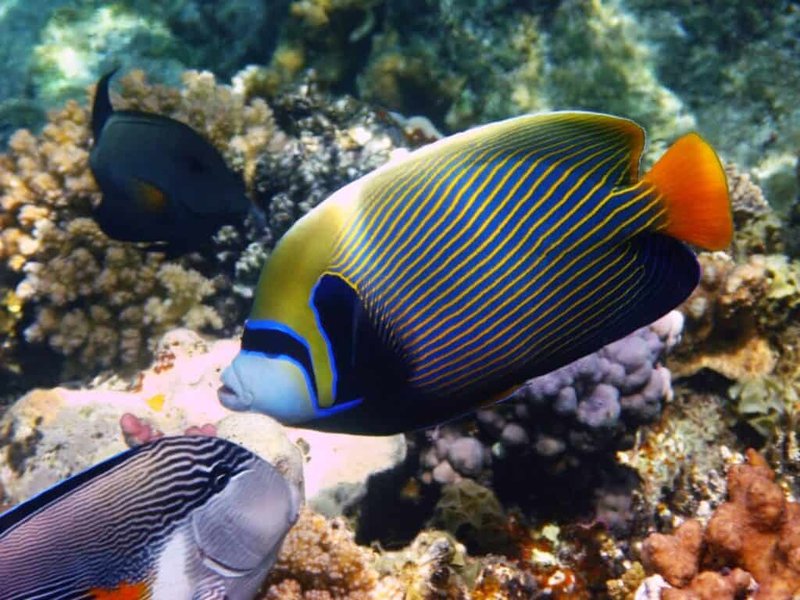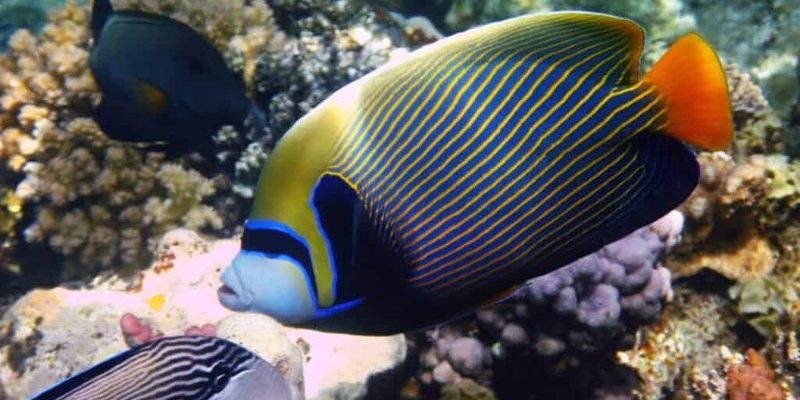
First things first: If you’re new to aquariums, a marine angelfish is not always the best place to start. They can be a bit temperamental, needing a delicate balance of water quality, diet, and tank mates to flourish. Think of it like tending to a garden—each flower has its own needs for sunlight, soil, and water. So, let’s take a closer look at how to create the perfect environment for your marine angelfish and ensure they live a happy, healthy life in your saltwater aquarium.
Understanding Marine Angelfish
Marine angelfish are a diverse group, coming in various species, with the most popular being the *Pomacanthus* family, like the Blueface or the Emperor angelfish. Each kind has its unique colors and patterns, making them quite the eye-catcher in any aquarium. These fish typically inhabit coral reefs in their natural habitats, which means they need a similar setup in your tank.
Here’s the thing: angelfish are not just pretty faces. They have lively personalities and can also exhibit territorial behaviors, especially as they get comfortable in their environment. You might find them exploring every nook and cranny of your aquarium or defending their space against other fish. Recognizing their behaviors is key to understanding what makes them happy.
Let me explain a bit more about their habitat needs. Marine angelfish thrive in stable water conditions with a pH between 8.1 and 8.4, a specific gravity of 1.020 to 1.025, and a temperature range of 75 to 80 degrees Fahrenheit. It’s crucial to regularly test your water conditions and make adjustments as needed. Think of it like checking the thermostat in your house—it’s essential for comfort!
Setting Up Your Aquarium
Creating a suitable environment for your marine angelfish is step one in your care journey. Start with a tank that’s at least 55 gallons—larger tanks give them more swimming space and help maintain water stability. This is a big deal because smaller tanks can lead to rapid fluctuations in water quality, which can stress your fish and lead to health issues.
When setting up your aquarium, include plenty of live rock and places for your angelfish to hide. It’s like giving them their own little world to explore and retreat to when they need some peace. Coral structures and other decorations can mimic their natural environment, which helps reduce stress. Plus, it provides areas for them to establish their territory.
Filtration is also important. A good protein skimmer can help remove waste and keep the water clean. Make sure to use a quality salt mix to create your saltwater, and let the tank cycle properly before introducing your angelfish. Just like baking a cake requires the right ingredients and time to rise, your aquarium needs time to settle before adding any fish.
Feeding Your Marine Angelfish
Here’s an important aspect: angelfish are omnivores and need a varied diet to stay healthy. Think of it as offering a balanced meal plan. You can feed them high-quality pellets or flakes designed specifically for angelfish, but don’t stop there! They love variety, so mix in some frozen or live foods like brine shrimp, mysis shrimp, and spirulina.
Feeding frequency is also key. Aim to feed your marine angelfish small amounts 2-3 times a day. This not only keeps their metabolism up but also mimics their natural foraging behavior. Scatter the food around the tank to encourage them to swim and explore—it’s like a treasure hunt for their meals!
Keep an eye on their eating habits. You might notice they become picky or refuse food due to stress or illness. If they aren’t eating properly, check your water parameters and ensure they’re feeling comfortable in their home. A happy fish is often a hungry fish.
Maintaining Water Quality
Water quality is your best friend when it comes to caring for marine angelfish. Regular testing of your aquarium’s parameters is crucial. You’ll want to keep an eye on ammonia, nitrite, nitrate, pH, and salinity levels. Any significant change can affect your fish’s health, so find a reliable testing kit and stick to a schedule. It’s like setting reminders on your phone for important appointments!
Keep in mind that frequent water changes—typically 10-20% weekly—help maintain stability. It’s a simple task that pays off big time in reducing toxins and replenishing essential elements in the water. Plus, it’s a good opportunity to check on your decorations and plants while you’re at it.
You might also consider using a sump or a quality filter system to keep your water clean. Adding a few hardy marine plants can help too, as they absorb excess nutrients and create a healthier environment. Think of them as natural air purifiers for your aquarium!
Selecting Tank Mates
Choosing the right tank mates is vital when caring for marine angelfish. They can occasionally be territorial, especially towards similar-looking species. Ideally, you want to introduce them to a well-planned community tank. Good companions might include small wrasses, gobies, or other peaceful fish that won’t get too close for comfort.
Avoid aggressive species or those that might outcompete them for food, as this could lead to stress or even bullying. If you’re unsure, research each species’ behavior before adding them to your tank. Picture it as setting up a neighborhood—some fish will get along, while others might not be the best of friends.
Always introduce new fish gradually, allowing your angelfish to establish their territory first. It might take some time, but a harmonious tank will lead to a more enjoyable experience for both you and your fish. Think about it: a peaceful community tank is much more pleasant to watch and maintain!
Common Health Issues and Troubleshooting
Even with the best care, marine angelfish can face health issues. Keep an eye out for signs like loss of appetite, unusual swimming patterns, or changes in color. Ich, or white spot disease, is one of the most common issues; it manifests as tiny white spots on the fish’s body.
If you notice any signs of illness, check your water parameters immediately. Stress from poor water quality can lead to a weak immune system, making them more susceptible to disease. Quarantine any new fish before introducing them to your main tank to prevent the spread of illness. It’s like getting a health check before joining a new gym!
When treating any ailments, avoid using harsh chemicals in your main tank. Instead, consider using a hospital tank for sick fish. This way, you can provide the necessary treatment without disrupting the whole aquarium. It’s similar to isolating someone who’s under the weather—you want to help them heal without risking others’ health.
Caring for a marine angelfish in a saltwater aquarium might come with its challenges, but the rewards are well worth the effort. With their stunning colors, lively behaviors, and unique personalities, they can easily become the crown jewels of your setup. By providing the right environment, diet, tank mates, and maintenance, you can help these beautiful fish thrive.
Take your time as you learn the ropes. Like any rewarding hobby, patience is key. Before you know it, you’ll be well on your way to creating a marine paradise right in your home. Enjoy the journey, and happy fishkeeping!

